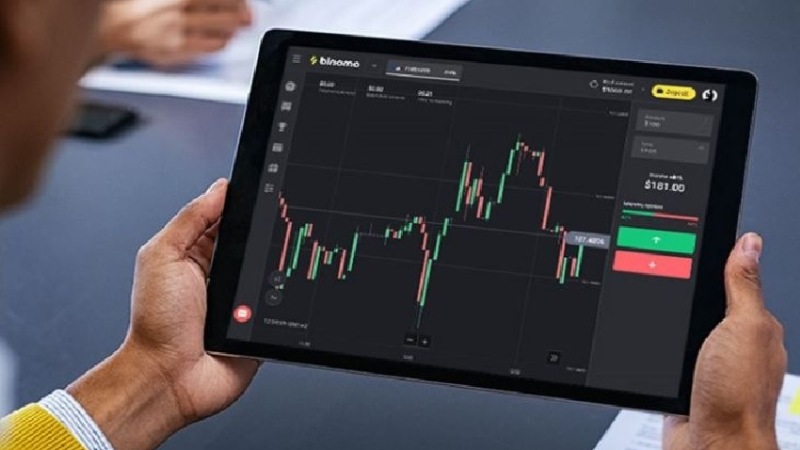A trading plan is a must for traders. It can be a simple or complex outline, but it should cover everything from your market expertise to your mental preparation.
For instance, if you don’t define your exit signals, you may close a decent trade too early and miss out on the full profit. Also, it’s important to set realistic risk/reward ratios and profit targets.
Define Your Goals
Having specific goals is a fundamental part of building your Forex trading plan. However, not all goals are created equal. Some are hollow and elusive, while others are more realistic and actionable.
For example, the goal of losing 20 pounds is a good one, but it doesn’t have any real meaning or structure. Instead, it would be more useful to create a process-based goal of going to the gym 5 times a week for 1 hour each time. By defining these specific goals and establishing an actionable plan to achieve them, you can see concrete results over time.
In the same vein, a clear description of your entry signals should be included in your plan. This allows you to adhere to your strategy, even if you aren’t in the mood to trade. It will also save you time and money by preventing you from impulsive decisions that are based on emotion and not your trading edge. By keeping a trading diary, you can track your progress and identify patterns. This is crucial for your long-term success as a trader.
Define Your Strategy
Developing a Forex trading plan is essential to your success as a trader. It allows you to analyse the market more thoroughly, and can help you avoid rash decisions that could cost you money. A good Forex trading plan should include a stop-loss level, as well as a take-profit level (although the latter isn’t always necessary). You also need to define how much you’re willing to lose on each trade – this will be different for every trader.
Traders who have an effective Forex trading strategy use it to guide their actions and keep emotions like greed and fear at a minimum. This way they are able to focus on their research and find trading opportunities that will give them an edge in the market.
Once you have a solid trading strategy, it is advisable to back-test and forward-test it with historical data and live market conditions. This can help you build confidence in your system, as well as make any necessary changes before using it on a real account. Many traders also keep a trade journal, recording their wins, losses and emotional reactions to each trade they take.
Define Your Entry Signals
When developing a trading plan, it’s essential to identify entry and exit signals that will help you adhere to your strategy. These signals should be based on your technical analysis, as well as any other factors that may influence the market.
One of the most common ways to find trading opportunities is by using trendlines. For example, if you see a trendline that shows that a currency pair is about to dip, it’s a good idea to set a stop-loss level at the point where you expect the price to fall before appreciating again. Similarly, you can use support and resistance levels as entry signals.
It’s also important to define both your risk as a percentage and in monetary terms. This way, you’ll be less likely to take trades that are too risky and potentially lose a significant chunk of your money. You can do this by setting a stop-loss and take-profit level for every trade that you enter. This will help you keep your emotions in check and avoid common mistakes like getting caught up in the FOMO trap.
Define Your Take-Profit and Stop-Loss Levels
Forex trading can be a very rewarding experience, but it also presents some significant risks. That’s why it is important to have a clear and defined trading plan.
Having a clearly defined plan helps you to avoid unnecessary losses and focus more on the profitable trades. It also helps you to maintain a consistent level of discipline. For example, if you set a limit on the number of trades per day, each one will be analysed with much more detail than if you didn’t have a limit. This will help you to hone your skills and become more proficient at forex trading.
Another benefit of having a trading plan is that it can help to keep your emotional responses to trades at a minimum. This is because you have rules in your plan that you must follow, and this can be an effective way to combat common emotions like greed, fear, and hope. You can learn more about this by reading this article on How To Stay Composed While Trading.
Define Your Mental Preparation
Forex trading isn’t for the faint of heart. It requires a lot of time, effort and focus, which can be extremely difficult when emotions are in play. The best way to combat this is to create a mental preparation plan for yourself.
For example, a good way to prepare for a trade is to write down the reason you entered and exited the position (this can help you see how emotional or biased your decision was). You can also include your expectations for the trade, such as how much profit you expect to make from each entry or exit point.
Another important factor to consider is your entry signals. You want to have a clear description of your trading edge setups, including all the indicators that need to be in place on each chart.
Finally, you should clearly define your exit signals. You don’t want to close a winning trade too early, as this can result in missing out on a large chunk of profit. You should also be prepared to leave a losing trade open if it’s still profitable, but this should be done with caution.




